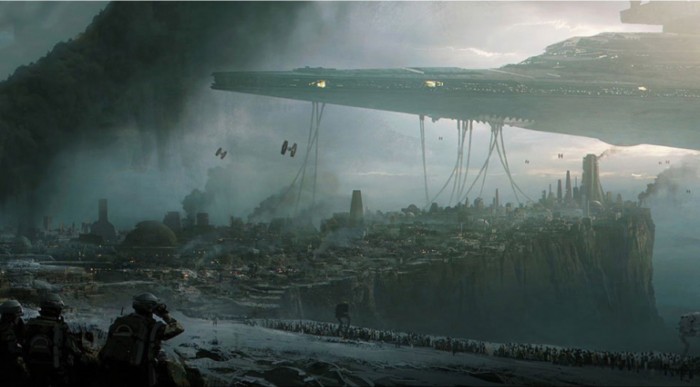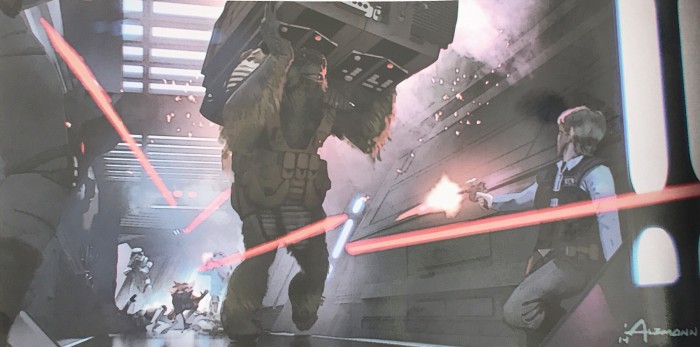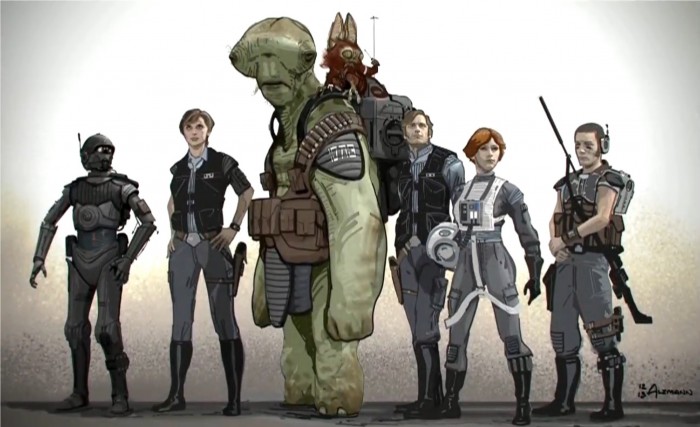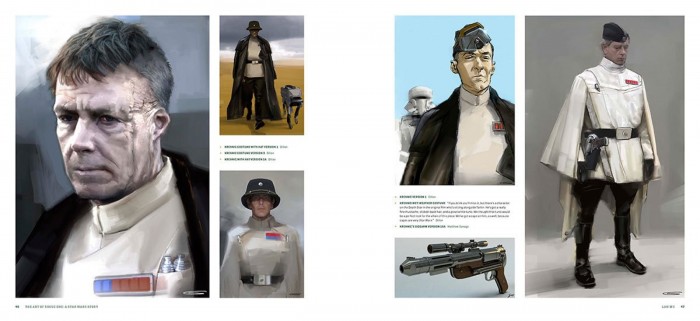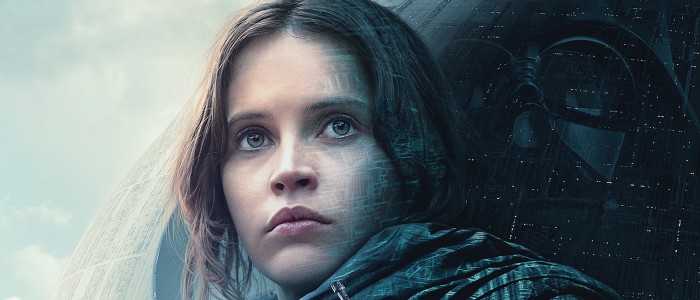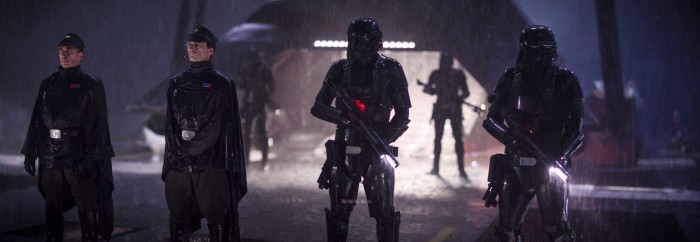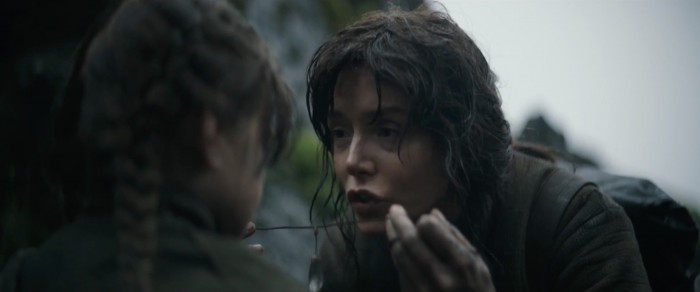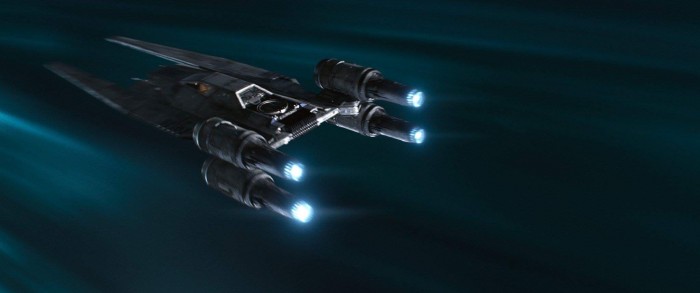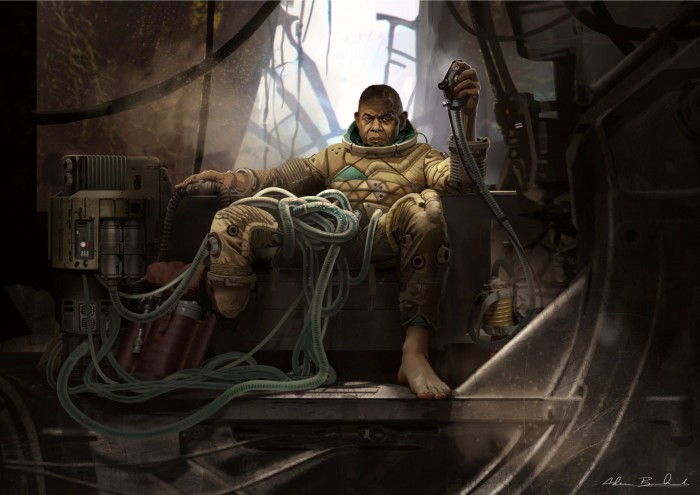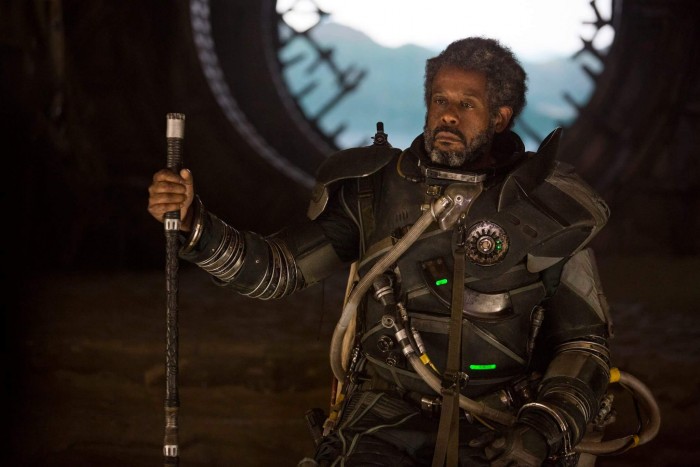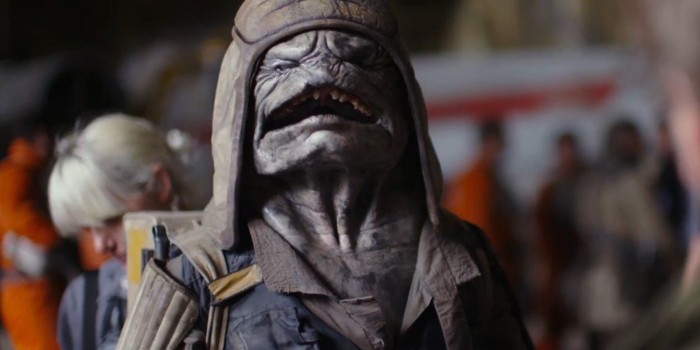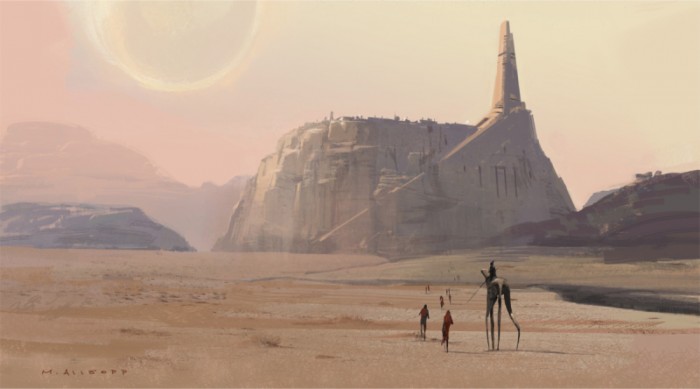How The Early 'Rogue One' Scripts Were Different From The Final Movie
We may receive a commission on purchases made from links.
Disney has released a bunch of books in connection with Rogue One: A Star Wars Story which give us some insight into John Knoll's original pitch for the movie and Gary Whitta's original screenplay, as well as how the story evolved under Chris Weitz. I'm always very interested in the evolution of the creative process on this scale, and learning what might have been.
We've already delved into the missing trailer footage to try to deconstruct what may have been reshot, now join me as we look at the original ideas for Rogue One, from pitch to shoot:
Hit the jump to find out what I learned.
I have read two of the new Rogue One books: The Art of Rogue One and Rogue One: The Ultimate Visual Guide. Both of the books offer a fantastic deeper dive into the world of Gareth Edwards' Star Wars standalone movie. The Art Of hardcover is particularly facinating from a development perspective.
The Project Was Originally Titled "Destroyer of Worlds"
ILM executive John Knoll's initial pitch for this Star Wars standalone story was a seven-page treatment titled "Destroyer of Worlds," which was a few pages of story and alongside some character biographies. Knoll pitched the idea to Lucasfilm head Kathleen Kennedy and Lucasfilm senior vice president of development Kiri Hart in May 2013 and they greenlit it in the room. Gareth Edwards wasn't officially announced as director until a year later.
The Original Pitch Was a Smaller-Budget Heist Movie
John Knoll initially envisioned the film as a heist movie, Mission: Impossible meets The Hunt for Red October. He cut together a sizzle reel for reference and inspiration, relaying the tone he envisioned for the film, which concept artist Ryan Church described as "very militaristic, streamlined, and self-contained" with "limited characters."
Initially, Knoll believed the film could be shot much more cheaply than the Skywalker saga episodes. Church called it "really low-budget," and Knoll's pitch initially called to reuse sets from Star Wars: The Force Awakens to be more economical.
Within months of the initial pitch, a concept art department was set up under Knoll, without a director or screenwriter, to explore blue-sky ideas of what the film could be. One piece of concept art titled "Computer Theft version 2" by Christian Alzmann (seen above) shows a large alien creature lugging a huge 5-foot by 3-foot computer through an Imperial hallway as Stormtroopers shoot from behind with blasters.
The Original Rebels Team Looked Much Different
The initial team of Rebels in this version was much smaller, with the characters themselves inspired by the capers, commando intelligence procedurals, and detective dramas John grew up with. The initial team consisted of "rebel commando Jyn Erso, rebel pilot Ria Talla, protocol droid K-2SO, and team members Dray Nevis and Jerris Kestal, along with aliens Lunak and Senna."
Senna was a massive Chewie-type but even bigger than that. Lunak was a small alien creature who could "skitter into an air duct, almost like a little thief." I kind of wish they were able to keep the alien characters as they would have added something interesting to the mix.
Krennic Was Originally an Imperial Spy in the Rebel Alliance
Krennic was originally an Imperial spy embedded within the team who would "covertly report back to an Imperial security bureau intelligence officer always at their heels." That intelligence operator named Williz Cree and he eventually became the character Krennic is in the final film. (More on that below.)
Krennic's early designs were based on a blink-and-you'll-miss-it character from A New Hope. There was a character sitting alongside Tarkin with a fine mustache and slicked-back hair and a white tunic. The early designs for the character adopted this look, but they added a black cape for good measure. Krennic eventually became an entirely different character than the man seen briefly in A New Hope.
Gareth Edwards Made Jyn the Main Character in This Ensemble Story
When director Gareth Edwards and screenwriter Gary Whitta came on board in May 2014, the project shifted from a lean ensemble heist movie to a kinetically-shot war movie with a big character journey. Some elements were retained but completely reconfigured. Krennic and Williz swapped names, Lunak and Senna were removed completely (later to be replaced with the Jedha duo), and K-2SO was retained but the black RA-7 droid evolved into something different.
Originally the emotional moments were more spread out throughout the team, but Gareth was more interested in telling the story from one point of view with her emotional journey at the core. So Jyn was upgraded from team leader to the main character and emotional core of the story. The question was: why would she be on this mission? What was driving her?
The idea was to make her stakes very personal. In early versions of the script, Jyn was given a mother who was in hiding from the Empire and a young brother she had to protect. Her father Galen was always intended to be the one responsible for designing a key component of the Death Star.
Death Troopers Were Originally Cyborgs
The early designs for the Death Troopers were based on the idea they could maybe develop a Stormtrooper that was in between Revenge of the Sith and A New Hope, a middle version between a soldier and a droid. Krennic's unit would be a mix of organic and mechanical with a helmet design that would make it clear that no human head was underneath. In the end, they decided to go with something more traditional looking, but taller and skinnier than traditional Stormtroopers.
The Ultimate Visual Guide notes that the Death Troopers "stem from a rumored project from Advanced Weapons Research division, designed to animate necrotic flesh" but "the troopers do not appear to be derived from this scheme."
Jyn's Mother Was Originally a Jedi
While the finished film has no Jedi, for a long time during development, Rogue One had Jedi around, even if they were only in the background.
Why was Jyn's mother hiding from the Empire? Because she was originally written to be a Jedi. When screenwriter Chris Weitz came on board the project, they decided it would be more interesting to have a story without Force powers and instead explore a time of "broken faith, a galaxy without hope," and normal people "pulling themselves up by their bootstraps." They wanted to show the absence of the Force through the planet and city of Jedha, as well as the former Guardians of the Whills.
The U-wing Was Originally Much Bigger
The Rebels' ship was originally envisioned as a Millenium Falcon-sized thing that could fit a team of people and had a cockpit and living quarters. Like the Ghost on Star Wars Rebels, this ship would fit a smaller, helicopter-sized, ship inside of it. The smaller ship would be used by the group to go down to a planet.
The filmmakers eventually realized they didn't need both, and decided they instead needed a transport version of an X-wing. Edwards wanted something a kid could draw because we all grew up drawing X-wings and TIE fighters. They tried a Z-wing, a Q-wing, and an R-wing, and eventually settled on a U-wing inspired by a catamaran. Discovering this ship alone took well over five hundred drawings.
Before they came to the U-wing name, they had been developing the vehicle as "Jyn's Ship." When the ship finally got approved, the art department celebrated with a party where Lucasfilm art production manager Nicole Letaw made a cocktail called Jyn's Ship featuring gin.
Lucasfilm Story Group's Kiri Hart Suggested Saw Gerrera
Gareth Edwards had the idea to include an extremist side of the Rebellion in the story, but it was Lucasfilm VP of Story Kiri Hart who suggested they use Saw Gerrera, a character originally created by George Lucas for the Clone Wars animated series. Before that, concept art pictured the character almost like a World of Warcraft orc. See here.
Chris Weitz Created Saw Gerrera's Alien Interrogation Creature Bor Gullet
Bor Gullet, a telepathic cephalopod that Saw Gerrera uses to extract information from prisoners, was created by screenwriter Chris Weitz "as a way to get inside Jyn's head." He gives us a look at the original intention of the creature, revealing that the Bor Gullet is an "empath, he can understand exactly what you're thinking, be he also feeds off emotion. He likes things like fear and sorrow and sadness. And joy, too."
The alien was initially designed as an insect-like creature, but they decided to do with an octopod because "his tentacles could go around people's necks and heads and into their ears."
It's unclear what the Bor Gullet's original role was in the story, but in the finished film, it is limited to interrogating Bodhi Rook. From Weitz's description, it feels like the creature originally had a different or extended purpose. Was Jyn interrogated by the creature?
Pao Was Created For Force Awakens
The Original Ending of Rogue One
Perhaps our biggest look at the original Rogue One ending that didn't conclude with the deaths of all our Rebel spies comes in a piece of concept art at the end of the book. It shows Jyn landed somewhere, looking at a hologram of the Death Star plans in front of an X-wing that she used to escape Scarif.
Other Bits I Learned
Here are some other bits I learned about the development of Rogue One:
More than 6,000 pieces of concept art were produced for Rogue One in the year and a half of production.
Gareth Edwards gave the art department a mandate that every scene should have an iconic frame.
The Imperial factory on Eadu came out of Edwards' request for a James Bond supervillain secret base location.
At one point in the development of the movie, a mountain planet with a hidden base was going to house the inner dish of the Death Star. The idea was that it would rise up out of a mountaintop lake. Thrusters would propel the massive dish through space until its ultimately attached to the Death Star.
Chirrut wears a Jedha pendant of reforged gold depicting the ancient starbird symbol, which was only recently modified by the Rebel Alliance. He was part of the now almost extinct order called the Guardians of the Whills, which were devoted to protecting the Temple of Kyber in the holy city of Jedha.
Jyn's necklace, which was given to her by her mother Lyra, is a fragment of a kyber crystal from Galen's research. The stone caught Lyra's eye when the family fled from Coruscant, and she took it to be a good omen.
The Ultimate Guide tells us that Jedha is speculated to be the origin point of the Jedi Order itself. If that was true, would the first Jedi temple be on Jedha? Remember, Luke Skywalker was thought to have gone in search of the first Jedi temple before the events of Star Wars: The Force Awakens. We had assumed he found this temple on Ach-To, but perhaps not? The book also says that some believe the Jedi got its name from the planet, while most scholars believe it to be the other way around.
The planet Jedha is described in the script as "a once-beautiful and ancient city," and its a "place of pilgrimage for people across the galaxy." The art department references Jerusalem, Morocco and the plateaus and Wadi rock of Jordan when designing the world. The occupation of Paris during World War II was used as inspiration for the city's current battle-scarred state. In the middle of the city is the Temple of the Kyber.
Please let me know if there is anything I missed in the comments below. And if you haven't yet, check out our previous Rogue One coverage:

